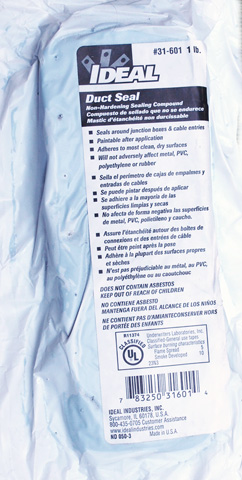

If you have ducts that get dirty or oily quite commonly, duct sealing tape is likely to fail. This method for sealing leaky ducts can be less time consuming and messy, but doesn’t tend to stack up with other duct sealing methods in terms of performance and longevity. Also known as aluminum foil tape, hvac duct sealing tape comes on a roll and can be found in every hardware store. One of the ways you can seal leaky ductwork is with hvac duct sealing tape. In order to bring you up to speed on how you can fix your leaky ductwork in the way that best suits you, let’s go through a few of the most popular options on the market: There are a few different duct sealing methods you can use if you think you have leaky ducts and want to address the issue. While a couple of small leaks here and there might not be putting a huge dent in your pocket when it comes time to pay your monthly energy bill, even minor leaks can cause issues that you would want to resolve immediately if you knew their cause. A large percentage of homeowners have leaks in their ductwork right now and don’t even realize it. This can lead to a lot of little corners, curves, bends, and places where the ductwork could become leaky. For example, each room will require different sized ducts connecting it to the furnace, depending on the size of the room. The setup of your ductwork might seem simple enough, but it’s actually a bit more complicated than you might think. Ductwork is the piping and connective tissue that connects from your furnace to each and every room in the house. When it comes to keeping your home warm in the winter and cool in the summer, there’s a good chance your ductwork will be doing the heavy lifting. Soft areas are represented by the lighter brown colors and represent sand deltas from parking lot runoff.The ductwork in your home has an incredibly important role to play, whether you realize it or not.

Areas that are maroon represent hard areas that remained from the original construction of the pond. All map outputs (e.g., water volume or hardness – next picture) can be analyzed in your private BioBase online account or exported to GIS for more sophisticated data analyses and layeringīottom hardness automated output automatically created along with bathymetric and aquatic vegetation layers in BioBase. Map was produced by 1,000 passively acquired GPS and bottom points. Data took 30-min to collectīlue-scale bathymetric output created after 10-minutes of data processing time by BioBase servers after upload. This one is 3 acres located in an urban area of Minnesota near Minneapolis (Maple Grove). Tracks showing a concentric circle approach toward mapping ponds smaller than 10 acres. James Johnson from Freshwater Scientific Services LLC gets his Lowrance HDS-5 all set to log data. Care should be taken to remove all air bubbles from the mold before pressing in the transducer


A 83/200 Lowrance skimmer transducer secured to the hull of a polyethylene kayak by duct seal putty.
Duct seal putty series#
Follow the series of pictures and captions to see how this worked!Įlectrician putty or “Duct Seal” available at most hardware stores can be used for shoot “thru-hull’ applications on kayaks or canoesįigure 2. Electrician putty (sold as “Duct Seal”) available for a few dollars at the neighborhood hardware store worked as a perfect medium for this application.
Duct seal putty portable#
As an addendum to our blog series on rapid, portable applications we wanted to experiment with a “thru-hull” mount of the 83/200 khz Lowrance HDS transducer on a kayak for mapping storm water retention ponds in an urban area of Minnesota (City of Maple Grove).


 0 kommentar(er)
0 kommentar(er)
